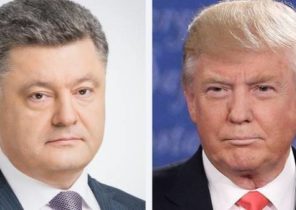
Welcome to a world where the Federal reserve and economic data no longer have much impact on the value and fluctuations of the funds and U.S. equities and the dollar. The asset market is now in control of the economic policies of President Donald trump — how through measures undertaken in the domestic market, and U.S. relations with other countries.
On Wednesday, Josh brown (Josh Brown), the shrewd and popular market columnist, remarked on Twitter: “Today is the fed meeting, and he’s getting less attention than Probarlo”. He compared the event, which was once the main focus of all markets, with the annual football match “all stars”, actively fighting to attract at least more attention, not to mention respect. On Tuesday Bank of England Governor mark Carney (Mark Carney) said that “15 minutes of fame” Central banks have come to an end.
This is a new situation for organizations that, as readily acknowledged the majority of market participants, recently was the main factor in determining asset prices. Existing and anticipated action, the fed played a crucial role in suppressing financial instability and raised the price of assets. During the work the fed is using emergency measures to untie these two market phenomena from the tangled economic and political grounds. Publication of data also affect asset prices, but to a limited extent and mainly due to their importance for the fed’s policy.
At the heart of this lay three rigid regulations on the economy, politics and the political environment for financial markets: the economy is stuck in the position of equilibrium in terms of weak growth stable, albeit frustratingly sluggish and not wide enough; that systemically important Central banks (not only the fed but the Bank of England, Bank of Japan and European Central Bank) is willing and able to rely on efficient and unconventional monetary policy regardless of the degree of risk of collateral damage and unforeseen opportunities; and that other policy instruments were in the background of that Congress strongly polarized and none of the parties can not simultaneously control the Executive and the legislature.
The November election is changed — as well as the administration’s approach trump, which became clear in the time since then, as President, took office on January 20.
With the accession of a Republican majority in both houses of Congress, and with the arrival of the President’s willingness to act quickly to turn things around (as he promised during the election campaign), after the election, policy data and the fed declined to lower the influence of a major group of market makers. And, at least at present, Central banks seem to be satisfied with this state of Affairs, especially considering how the policy puts pressure on their autonomy.
Last week was a good illustration of this. Report on the fed’s policy on Wednesday by and large turned out to be a minor event for the markets. In addition, higher-than-expected economic indicators, including manufacturing and jobs, hardly caused any reaction.
In contrast, the White house is the main factor in the development of the market. Over the past two weeks are signs of deregulation have been associated with the government’s order on resumption of construction of Keystone, which pushed the shares up, while statements about the restriction on the entry and possible 20% tax on goods from Mexico have reduced them. Deviations from the interventionist bias from the long-term policy on the dollar — and is a departure from the situation when he left in the care only of the Ministry of Finance who keeps talking about the advantages of the “strong dollar” — reduced the condemnation of those who trade currencies, based on traditional factors. And earlier this week approving comments the White house has allowed only sector stock index, S&P (biotech) to avoid lowering effects, which reduced all the rest of the sector.
The good news is that the markets are moving away from artificial and ultimately unsustainable, engine and price volatility (buy the fed’s assets, which do not change fundamentally the basic and structural sources of growth). Now they’re more sensitive to the more natural engine in the form already taken and possible actions that affect productivity, trade, corporate investment and broad economic incentives. Not very good news is that this transition occurs under conditions of significant uncertainty, including about the fact that will result in intense heroic tug of war between supporters organized reflation, and those who prefer messy stagflation.







